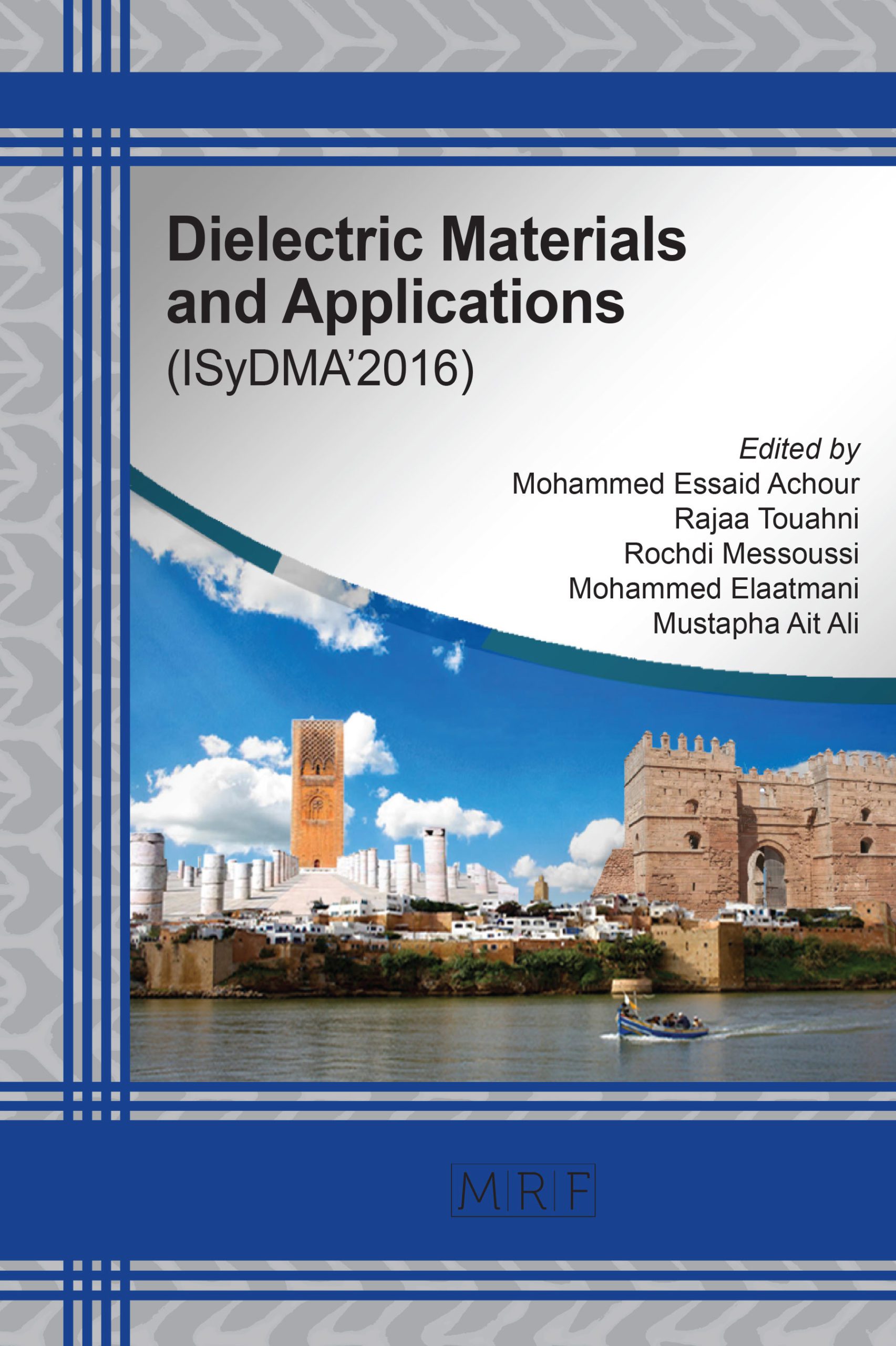Y. NIOUA, S. EL BOUAZZAOUI, M.E. ACHOUR, F. LAHJOMRI
Abstract. This article reports on a study of the dielectric properties of carbon black particles in a polymer matrix at microwave frequencies (0.5- 9.5 GHz). The experimental data was compared to the calculated values obtained by McLachlan and Lichteneker and Rother’s Laws. These both laws did not fit accurately the experimental data for the high concentrations of carbon particles. To overcome this difficulty, these models with adjustable parameters were used with good agreement between the experimental results and calculated values. Nevertheless, the adjustable parameter is not universal and it depends on the frequency.
Keywords
Dielectric properties, Complex permittivity, Mixing laws, Composites
Published online 12/10/2016, 4 pages
Copyright © 2016 by the author(s)
Published under license by Materials Research Forum LLC., Millersville PA, USA
Citation: Y. NIOUA, S. EL BOUAZZAOUI, M.E. ACHOUR, F. LAHJOMRI, ‘Numerical simulation of the microwave complex permittivity of carbon black particles filled polymer composites’, Materials Research Proceedings, Vol. 1, pp 17-20, 2016
DOI: http://dx.doi.org/10.21741/9781945291197-5
The article was published as article 5 of the book Dielectric Materials and Applications
References
[1] M. Sahimi, Heterogeneous Materials I: Linear Transport and Optical Properties (Springer, New York, 2003).
[2] M.E.Achour “ Electromagnetic properties of carbon black filled epoxy polymer composites”, in/Prospects in filled polymers engineering: mesostructure, elasticity network, and macroscopic properties Brosseau, C. ed. Transworld Research Network. (2008)
[3] D.S. McLachlan, “The complex permittivity of emulsions: an effective media-percolation equation”, Solide State Comunications, Vol 72 ,p. 831 (1989) .
[4] M.Garnett, J.C.Philos, ‘Colours inMetal Glasses and in Metallic Films’Trans.R.Soc.London., Vol. 203, pp. 385-420 . (1904). http://dx.doi.org/10.1098/rsta.1904.0024
[5] D.A.G.Bruggeman, Ann phys, Vol. 24, P. 636. (1935).
[6] S. El Bouazzaoui, M.E. Achour,C. Brosseau, ‘Microwave effective permittivity of carbon black filled polymers: Comparison of mixing law and effective medium equation predictions’. J.Appl. Phys., Vol 110, 074105, (2011). http://dx.doi.org/10.1063/1.3644947
[7] A.V. Goncharenko, V.Z. Lozovski, E.F. Venger ‘‘Lichtenecker’s equation: applicability and limitations,’’ Optics communications, Elsevier, Vol. 174 , pp. 19-32, 15 junuary 2000.
[8] M. Essone Mezeme,S. El Bouazzaoui,M. E. Achour,2 C. Brosseau, JOURNAL OF APPLIED PHYSICS 109, 074107 (2011). http://dx.doi.org/10.1063/1.3556431
[9] Achour, M.E., El Malhi,M., Miane, J.L., Carmona, F., Lahjomri, F. (1999). J. Appl. polym. Sci., Vol .73, pp. 969-973.
http://dx.doi.org/10.1002/(SICI)1097-4628(19990808)73:6<969::AID-APP14>3.0.CO;2-1
[10] H.T.Vo, F.G.Shi, Microelectronic journal. 33, 409-415 (2002).
[11] M.G.Todd, F.G.Shi, J.Appl. Phys. 94, 7 (2003). http://dx.doi.org/10.1063/1.1604961































